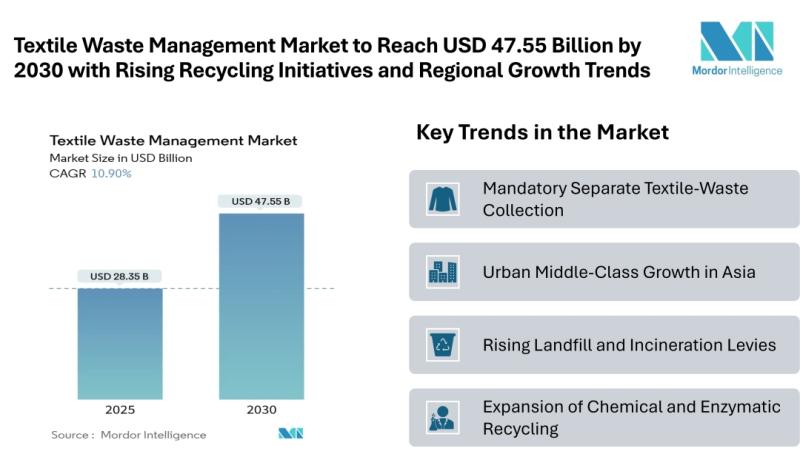To secure reprogrammable chips, the US must address supply chain risks – Atlantic Council

Executive Summary
This report examines the supply chain for Field-Programmable Gate Arrays (FPGAs), a critical semiconductor technology underpinning global economic stability and technological advancement. The security, availability, and cost of FPGAs directly impact the achievement of several Sustainable Development Goals (SDGs), particularly SDG 9 (Industry, Innovation, and Infrastructure), SDG 8 (Decent Work and Economic Growth), and SDG 16 (Peace, Justice, and Strong Institutions). Current market dynamics reveal a tendency for firms to prioritize short-term cost reductions, thereby externalizing significant security and availability risks. This market failure jeopardizes the resilient infrastructure necessary for sustainable economic growth and global stability. This report recommends four key policy interventions for the United States government to mitigate these risks and align the FPGA supply chain with long-term sustainable development objectives. These interventions focus on enhancing institutional capacity through data sharing, fostering secure innovation, ensuring resource resilience via strategic stockpiling, and promoting cross-sectoral partnerships to prepare for disruptions, thereby contributing to SDG 17 (Partnerships for the Goals).
1. Introduction: The Imperative for a Sustainable and Resilient Semiconductor Supply Chain
1.1 Problem Statement in the Context of Global Goals
Semiconductors are foundational to the modern global economy and are essential for the infrastructure that supports sustainable development. Field-Programmable Gate Arrays (FPGAs), a specialized type of semiconductor, are particularly vital for critical systems in telecommunications, automotive, and artificial intelligence. However, the global FPGA supply chain is exposed to significant vulnerabilities that threaten progress towards key SDGs. Current policies, such as the 2022 CHIPS and Science Act, have largely overlooked the unique characteristics of FPGAs, creating a policy gap that could undermine efforts to build the resilient and innovative infrastructure central to SDG 9. Disruptions to this supply chain could severely impact industries crucial for SDG 8 and escalate geopolitical tensions, working against the aims of SDG 16.
1.2 Policy Significance and Alignment with Sustainable Development
FPGAs are distinct from other logic chips due to their re-programmability and extended product lifecycles, which inherently support SDG 12 (Responsible Consumption and Production) by reducing hardware obsolescence. Despite their relatively small market size, their role in enabling key technologies makes their supply chain a critical concern for sustainable development. This report addresses three key questions:
- What are the key risks in the FPGA supply chain and how do they impact progress towards the SDGs?
- Are current risk mitigation strategies adequate for ensuring the long-term sustainability and resilience of critical infrastructure?
- What policy interventions can the US government implement to align the FPGA supply chain with the objectives of SDG 9, SDG 16, and SDG 17?
2. Field-Programmable Gate Arrays (FPGAs): A Cornerstone of Modern Infrastructure and Innovation
2.1 FPGA Overview and Role in Sustainable Innovation
FPGAs occupy a unique position between general-purpose CPUs and highly specialized ASICs, offering a balance of performance and flexibility. Their ability to be reconfigured after manufacturing—a process using specialized code called gateware—makes them highly adaptable. This flexibility extends their operational life to over two decades, a key feature that promotes resource efficiency and aligns with the principles of SDG 12. Most FPGAs are produced at legacy process nodes, highlighting a different segment of the semiconductor industry than the leading-edge chips that dominate policy discussions.
2.2 Applications Driving Sustainable Development
FPGAs are integral to sectors that are critical for achieving the SDGs:
- AI, Cloud, and Data Centers: FPGAs accelerate AI workloads and underpin cloud infrastructure, which are essential tools for innovation, economic growth (SDG 8), and data-driven solutions to global challenges like climate change (SDG 13).
- Military and Defense Systems: The use of FPGAs in defense ensures national security, a prerequisite for the peace and stability sought by SDG 16. Their re-programmability helps mitigate hardware obsolescence, contributing to more sustainable defense procurement.
- Telecommunications: FPGAs are critical for 5G networks, the backbone of modern communication and a key enabler of sustainable cities and communities (SDG 11) and resilient infrastructure (SDG 9).
- Automobiles: In modern vehicles, particularly electric ones, FPGAs enable advanced safety systems and efficient power management, contributing to safer transport (SDG 11) and more responsible consumption patterns (SDG 12).
3. Risk Analysis Through the Lens of Sustainable Development
The FPGA supply chain faces interrelated risks to cost, availability, and security, each with significant implications for the SDGs.
3.1 Economic and Cost Risks (SDG 8)
Cost risks, driven by potential tariffs, material shortages (e.g., gallium), and climate change adaptation, threaten the economic viability of industries reliant on FPGAs. While the build-out of lagging-edge manufacturing capacity in the People’s Republic of China (PRC) may lower costs, it introduces other risks. Unstable costs can hinder the broad adoption of technologies needed for economic growth and innovation, impacting SDG 8.
3.2 Availability Risks to Resilient Infrastructure (SDG 9 & 11)
Availability is threatened by both “can’t make” and “won’t sell” scenarios. Geopolitical concentration, particularly in East Asia, creates a single point of failure from natural disasters or conflict, directly threatening the stability of infrastructure required by SDG 9. Geopolitical tensions could also lead to export restrictions (“won’t sell”), weaponizing the supply chain and undermining the global cooperation essential for sustainable development. A disruption in FPGA availability would cripple critical services in telecommunications and transport, directly impacting the resilience of cities (SDG 11).
3.3 Security Risks and the Challenge to Strong Institutions (SDG 16)
Security vulnerabilities in FPGA hardware, gateware, or related software pose a profound threat to the trust and stability required for strong institutions (SDG 16). A compromised FPGA could undermine critical infrastructure, from energy grids to financial systems, eroding public trust and creating systemic risk. The current market underinvests in security, demonstrating a failure of corporate governance to address risks that have broad societal consequences. Building trust through technical verification, transparent governance, and reliable legal frameworks is essential for securing the technological foundation of modern society.
4. Overall Assessment: A Call for Responsible Governance
The FPGA supply chain suffers from a market failure where firms excessively prioritize cost, neglecting the significant externalities of availability and security risks. This approach is unsustainable and misaligned with the long-term vision of the SDGs. The increasing manufacturing capacity in the PRC will likely exacerbate this trade-off, making secure and reliable FPGAs more expensive and tempting firms to accept greater risk. This situation necessitates government intervention to correct the market failure and steer the industry towards a model that values resilience and security, in line with the principles of responsible governance under SDG 16 and resilient infrastructure under SDG 9.
5. Policy Recommendations for a Sustainable and Secure Future
To address the unmitigated risks in the FPGA supply chain and align it with global sustainability goals, the US government should implement four interrelated policy interventions.
-
Launch a Data-Sharing and Analytics Hub to Foster Collaborative Governance (SDG 16 & 17)
Designate a national hub, such as the Department of Commerce’s Supply Chain Center, to collect and analyze SKU-level data on the FPGA supply chain. This will build the institutional capacity (SDG 16) needed for informed policymaking and foster public-private partnerships (SDG 17) to enhance situational awareness and collective resilience.
-
Invest in Secure and Sustainable Innovation (SDG 9)
Direct federal research funding towards developing enhanced FPGA security techniques. By investing in the R&D of more secure and verifiable chips, the government can foster the kind of robust and reliable innovation that is the cornerstone of SDG 9. This includes modernizing security standards through NIST to ensure technology is developed responsibly.
-
Build a Strategic Stockpile to Ensure Resource Resilience (SDG 12 & 9)
Create a national stockpile of critical FPGA chips to act as a buffer against supply disruptions. This strategy directly addresses availability risks, ensuring the continuity of critical infrastructure (SDG 9) and representing a form of responsible resource management to prevent crisis-driven waste (SDG 12).
-
Prepare for Disruptions with Cross-Sector Planning (SDG 9 & 17)
Develop a government-wide playbook and encourage private-sector contingency planning for major supply chain disruptions. This proactive approach to risk management builds resilience into our critical systems (SDG 9) and requires strong collaboration between government, industry, and international allies, embodying the spirit of SDG 17.
Policies to Reconsider
The report advises against certain policies that could be counterproductive to long-term sustainable development:
- Subsidized Onshore Manufacturing: The economic and operational barriers are too high. Instead, the focus should be on strengthening supply chain coordination with allied nations, promoting the partnership model of SDG 17.
- Broad Export Controls on Lagging-Edge Equipment: Such controls would be difficult to enforce, impose high costs, and risk escalating geopolitical tensions, undermining the stability sought by SDG 16.
- Full Decoupling from PRC Supply Chains: While security and availability risks from PRC-based firms are real, they can be managed through technical solutions and stockpiling. A full decoupling would impose severe economic costs, hinder US technological leadership, and fragment the global innovation ecosystem, working against the collaborative principles of the SDGs.
6. Conclusion
Securing the FPGA supply chain is not merely a matter of national security or economic competitiveness; it is a prerequisite for achieving global sustainable development. By implementing a strategic set of policy interventions focused on data-driven governance, secure innovation, resource resilience, and collaborative planning, the US government can mitigate critical risks and guide the industry toward a more sustainable and secure future. This approach can serve as a pilot for managing other critical technology supply chains, ensuring that technological advancement contributes positively to a resilient, prosperous, and peaceful world as envisioned by the Sustainable Development Goals.
Analysis of Sustainable Development Goals in the Article
1. Which SDGs are addressed or connected to the issues highlighted in the article?
- SDG 8: Decent Work and Economic Growth: The article emphasizes the economic importance of the FPGA industry for the US economy, highlighting its role in critical sectors like automotive, cloud computing, and telecommunications. It discusses policies like the CHIPS and Science Act aimed at bolstering domestic industry and ensuring economic prosperity.
- SDG 9: Industry, Innovation, and Infrastructure: This is a central theme. The report focuses on a key technological innovation (FPGAs), the resilience of industrial supply chains, and the security of critical infrastructure (military, telecommunications, data centers) that relies on these components. It explicitly recommends investments in R&D and upgrading technological capabilities.
- SDG 11: Sustainable Cities and Communities: The article connects FPGAs to sustainable transport systems by detailing their use in modern automobiles, particularly in electric vehicles for power management and in advanced driver assistance systems that enhance safety.
- SDG 12: Responsible Consumption and Production: The report touches upon sustainable production patterns by discussing the management of critical natural resources (gallium), the long lifecycle and reusability of FPGAs which reduces hardware obsolescence, and the need for resilient supply chains that can withstand disruptions.
- SDG 16: Peace, Justice, and Strong Institutions: The article is deeply concerned with national security, geopolitical risks (US-PRC competition), and the need for effective, accountable government institutions. It proposes creating new institutional capacities (a data-sharing hub) and government-wide plans to manage security threats and supply chain disruptions.
- SDG 17: Partnerships for the Goals: The report advocates for multi-stakeholder partnerships to address the identified risks. It recommends collaboration between government agencies (Commerce, Defense, NIST) and private sector firms, as well as engagement with industry consortia and international allies to secure the supply chain.
2. What specific targets under those SDGs can be identified based on the article’s content?
-
SDG 9: Industry, Innovation, and Infrastructure
- Target 9.2: Promote inclusive and sustainable industrialization. The article directly discusses the US’s “approximate 12 percent share of the overall semiconductor manufacturing market” and analyzes policies aimed at onshoring and strengthening the domestic industrial base, such as the CHIPS and Science Act.
- Target 9.4: Upgrade infrastructure and retrofit industries to make them sustainable. The article mentions that FPGAs are used in electric vehicles to “enhance power management by optimizing battery efficiency” and that climate change creates costs for the industry, implying a need for adaptation and more sustainable processes.
- Target 9.5: Enhance scientific research and upgrade technological capabilities. The report explicitly recommends that the US government “Direct federal research funders to prioritize academic and industrial R&D of enhanced FPGA security techniques” and calls for NIST to modernize security standards.
- Target 9.b: Support domestic technology development, research and innovation. The entire report is a policy analysis aimed at creating a “conducive policy environment” to support the domestic FPGA ecosystem and maintain “American global technological leadership.”
-
SDG 12: Responsible Consumption and Production
- Target 12.2: Achieve the sustainable management and efficient use of natural resources. The article highlights risks related to the supply of critical minerals, noting that China “controls about 99 percent of the market” for refined gallium, an essential input for FPGA manufacturing, and has imposed export restrictions.
- Target 12.5: Substantially reduce waste generation. The article notes that FPGAs have “long production lifecycles—often five to twenty-five years” and their flexibility “allows for repurposing older FPGAs for novel tasks,” which mitigates hardware obsolescence and aligns with waste reduction through reuse.
-
SDG 16: Peace, Justice, and Strong Institutions
- Target 16.6: Develop effective, accountable and transparent institutions. A key recommendation is to “Designate the Department of Commerce’s Supply Chain Center (SCC)… as the national data-sharing and analytics hub for FPGA supply and sourcing” to improve situational awareness and enable more effective policy interventions.
- Target 16.a: Strengthen relevant national institutions… to prevent violence and combat… crime. The report’s focus on mitigating security risks from hardware, gateware, and software attacks on FPGAs used in critical military systems (e.g., F-35 fighter jet, Javelin missile) is a direct effort to strengthen national institutions against security threats.
-
SDG 17: Partnerships for the Goals
- Target 17.17: Encourage and promote effective public, public-private and civil society partnerships. The report recommends that the government “Enhance existing engagement with semiconductor industry researchers, policymakers, manufacturers, and customers, including through existing consortia such as the SEMI Semiconductor Manufacturing Cybersecurity Consortium.”
3. Are there any indicators mentioned or implied in the article that can be used to measure progress towards the identified targets?
-
For Target 9.2 (Promote industrialization):
- Indicator: Share of global semiconductor manufacturing. The article provides a baseline figure: “the United States holds only an approximate 12 percent share of the overall semiconductor manufacturing market.” Progress could be measured by changes in this percentage.
-
For Target 9.5 (Enhance R&D):
- Indicator: Public and private R&D spending on FPGA security. The recommendation to “Direct federal research funders to prioritize academic and industrial R&D” implies that the amount of funding allocated by agencies like DARPA, NSF, and the Department of Energy could be a key metric.
-
For Target 12.2 (Sustainable management of natural resources):
- Indicator: Price and availability of critical minerals. The article mentions that “the price of gallium alone rising 80 percent since December 2024” due to export restrictions. Tracking the price and import sources of such minerals would serve as an indicator of supply chain stability and resource management.
-
For Target 16.6 (Develop effective institutions):
- Indicator: Establishment and use of the proposed data-sharing hub. Progress can be measured by whether the “Department of Commerce’s Supply Chain Center (SCC)” is designated as the hub, the number of public and private entities providing data, and the frequency of its analytical outputs (e.g., tabletop exercises).
-
For Target 17.17 (Promote partnerships):
- Indicator: Number and effectiveness of public-private collaborations. The article suggests metrics such as the development of “FPGA-specific technical security solutions” through industry consortia and the rate of private sector participation in government-led contingency planning exercises.
4. Table of SDGs, Targets, and Indicators
| SDGs | Targets | Indicators Identified in the Article |
|---|---|---|
| SDG 8: Decent Work and Economic Growth | 8.2: Achieve higher levels of economic productivity through diversification, technological upgrading and innovation. | Economic impact of FPGA availability on key sectors (automotive, AI, telecommunications); investment in high-value technology through policies like the CHIPS and Science Act. |
| SDG 9: Industry, Innovation, and Infrastructure | 9.2: Promote inclusive and sustainable industrialization.
9.5: Enhance scientific research, upgrade technological capabilities, and encourage innovation. |
US share of the global semiconductor manufacturing market (currently ~12%).
Level of funding from federal agencies (DARPA, NSF) for R&D in FPGA security; development of modernized security standards by NIST. |
| SDG 11: Sustainable Cities and Communities | 11.2: Provide access to safe, affordable, accessible and sustainable transport systems. | Adoption rate of FPGAs in electric vehicles for power efficiency and in advanced driver assistance systems for safety features. |
| SDG 12: Responsible Consumption and Production | 12.2: Achieve the sustainable management and efficient use of natural resources.
12.5: Substantially reduce waste generation through reuse. |
Price and supply stability of critical minerals like gallium (price noted as rising 80%).
Average lifecycle length of FPGAs (noted as 5-25 years); rate of repurposing of older FPGAs. |
| SDG 16: Peace, Justice, and Strong Institutions | 16.6: Develop effective, accountable and transparent institutions.
16.a: Strengthen relevant national institutions to combat security threats. |
Establishment and operational status of the proposed Supply Chain Center (SCC) data hub; number of firms participating.
Implementation of a national FPGA stockpile; development of a government-wide playbook for supply disruptions. |
| SDG 17: Partnerships for the Goals | 17.17: Encourage and promote effective public-private partnerships. | Number of joint initiatives with industry consortia (e.g., SEMI); participation of private firms in government-led tabletop exercises and data-sharing agreements. |
Source: atlanticcouncil.org

What is Your Reaction?
 Like
0
Like
0
 Dislike
0
Dislike
0
 Love
0
Love
0
 Funny
0
Funny
0
 Angry
0
Angry
0
 Sad
0
Sad
0
 Wow
0
Wow
0













































































